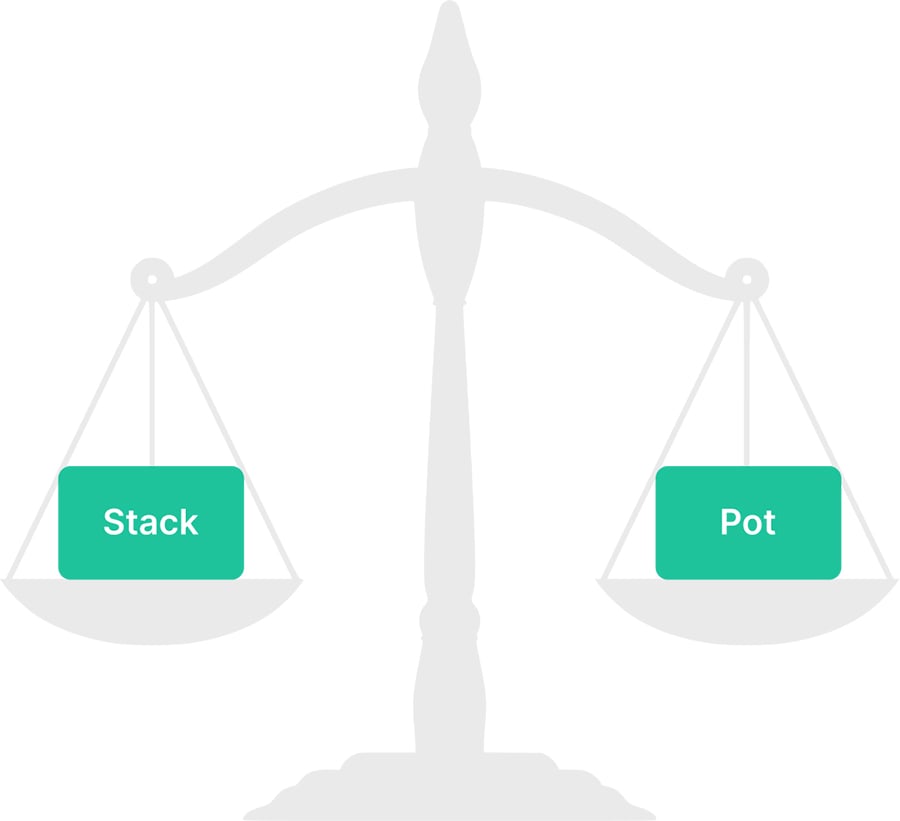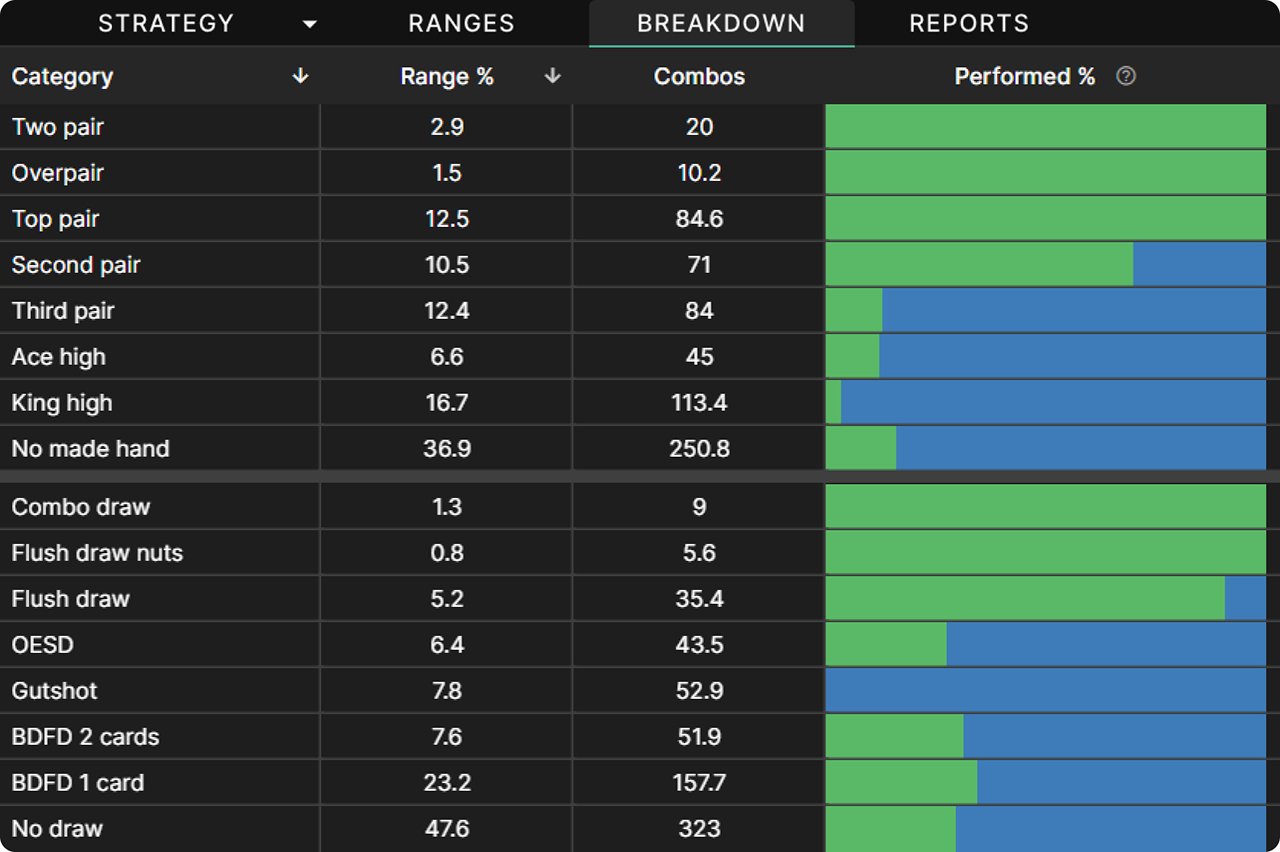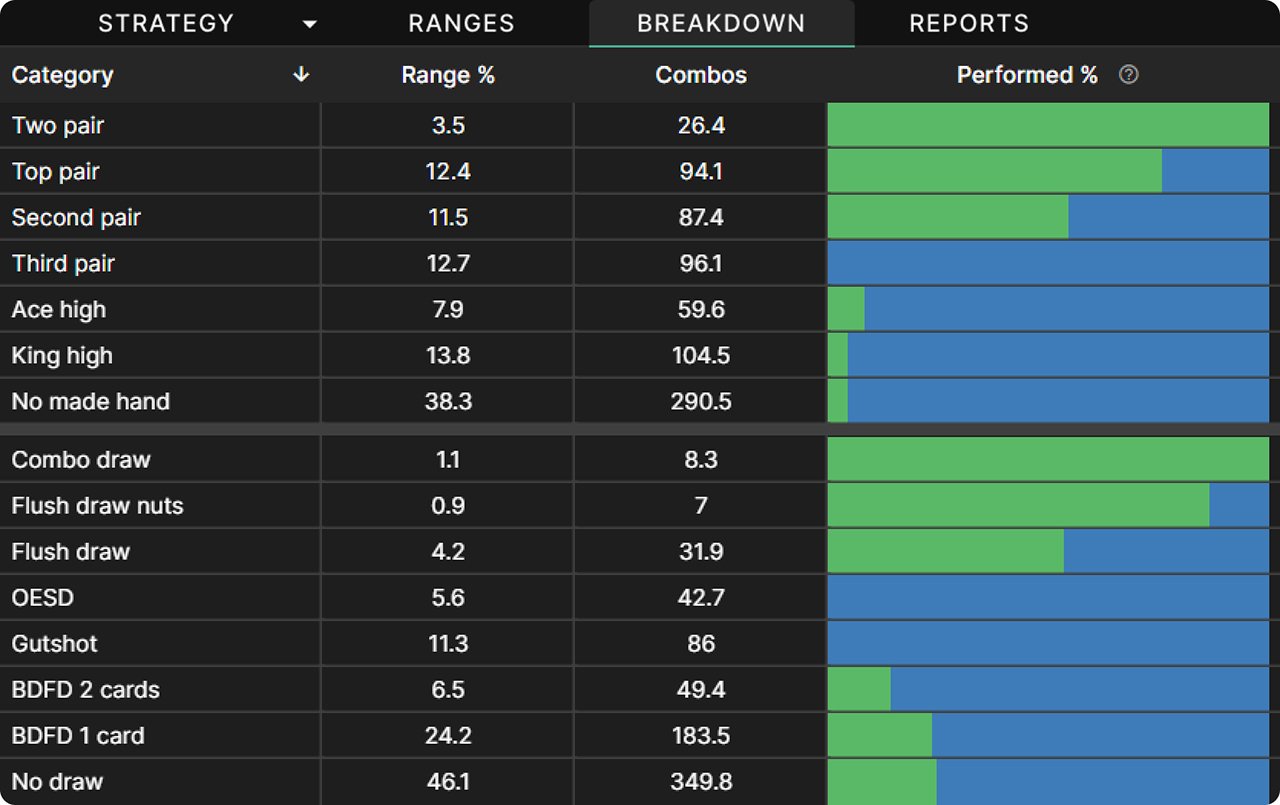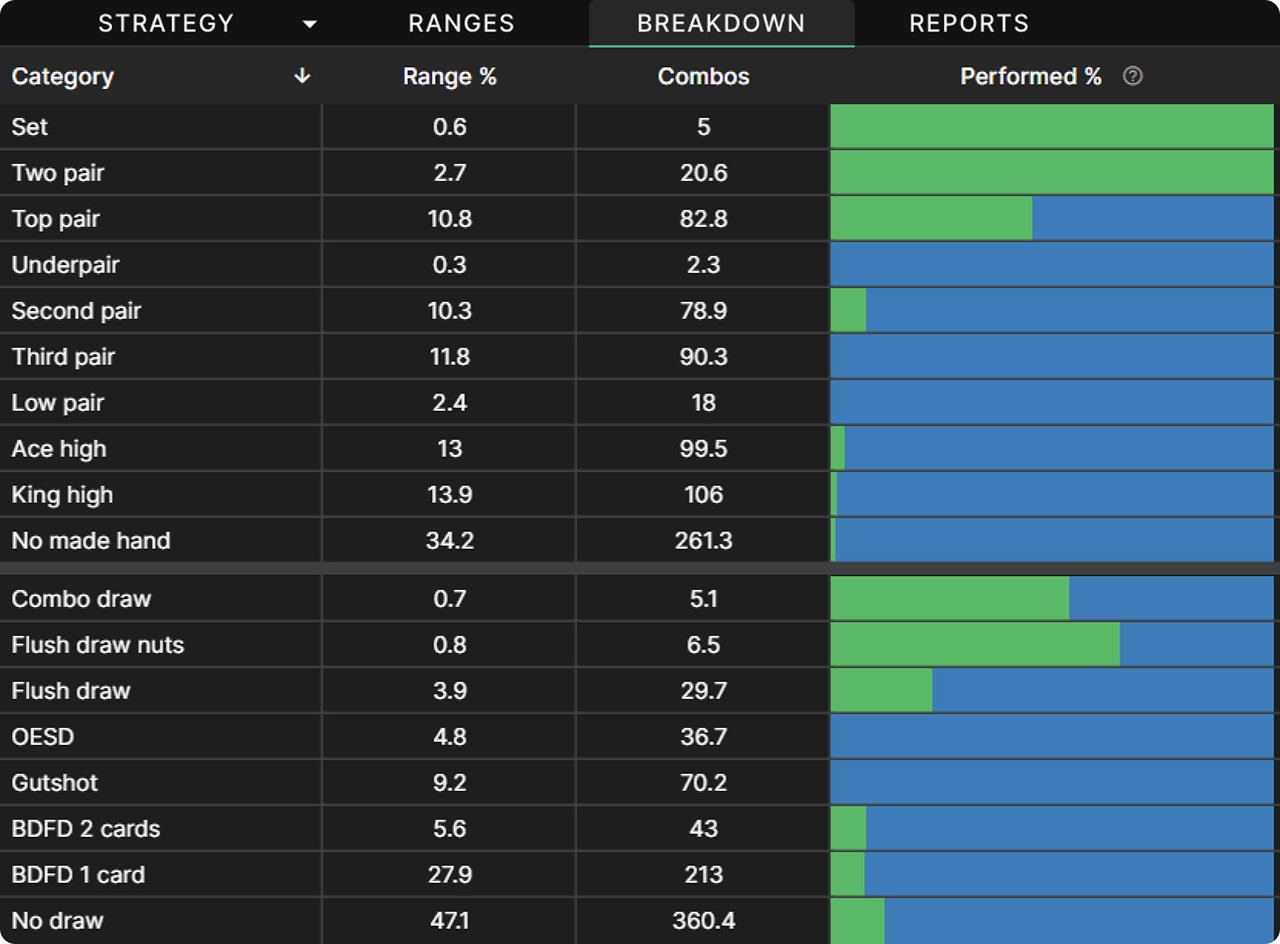Stack-to-pot ratio

Stack-to-pot ratio, or SPR, is a way of measuring how deep the effective stack is and thus how strong of a hand will be required to risk that stack for a shot at winning the money already in the pot. It is, in other words, a calculation of risk and reward: the money in the effective stack is the most any player could be required to risk in order to win the reward, the pot.
Sometimes, especially before the flop, you may see the size of the stack expressed in big blinds rather than SPR, but this is a less useful metric. It can be downright misleading to talk about risk without considering reward.
SPR is defined as the effective stack (how much you can risk) divided by the pot:

Equity and SPR
With $100 in the pot, you see the flop against a single opponent, who promptly moves all-in for $100. What was the SPR at the moment you saw the flop, before your opponent bet? How much equity do you need to call the bet?
With $100 in the effective stack and $100 in the pot, the SPR was $100/$100 = 1. Calling this bet requires contributing $100 to a final pot of $300, so you would need $100/$300 = 33% equity.
If the SPR were 2, the bet would be $200, and you would need $200/$500 = 40% equity. At SPR 3, you would need $300/$700 = 43% equity to call a $300 bet. The more money you risk relative to what is already in the pot, the stronger a hand you must have to profit on the wager, (If you don’t understand these calculations, read this Pot Odds article first).
This has a compounding effect, because your opponents need stronger hands to risk their stacks as the SPR gets higher. At SPR 1, your opponent could go all-in with a flush draw, which typically has about 35% equity, even if she knew you were never going to fold. Because her range can contain relatively weak hands, your own relatively weak hands will more easily reach the 33% threshold.
At a higher SPR, you should expect your opponent’s hand to be stronger when her entire stack goes into the pot. That means not only do you need more equity to justify risking more money relative to the pot, but also that you are less likely to have that equity because your opponent’s range will be stronger.
Equity Required to Breakeven By SPR
The above chart reflects a scenario where all the money goes in at once, with no chance of a fold from either player. Breakeven Equity is defined as the pot odds required to call. At very low SPRs, that’s realistic.
As stacks get deeper, the betting usually happens in more complex ways. One player bets a combination of hands with good equity plus some that just want the opponent to fold. Then the opponent raises ⇪, constructing her raising range with the same criteria, although she may not anticipate as much fold equity and must expect to be against a stronger range if her raise is called. Then the original player may go all-in, again banking on a mix of folds plus pot equity and taking into account that if his all-in bet is called, his opponent will probably have a strong hand.
Robustness
Some hands hold their equity better than others as the opponent’s range gets stronger. This attribute is often called “equity retention” or “robustness”.
Against a range of any pair and any draw—the sort of range with which an opponent might stack off at SPR 1—middle pair has pretty good equity. Against a range of top pair or better and only the strongest draws—a stack off range we might see at SPR 4—middle pair does not perform nearly so well. Bottom set has great equity against that SPR 4 stack off range, but at SPR 100 it should expect to be up against only higher sets, in which case it has just one out and so very poor equity.
The magic of draws is that, while they are rarely dominating favorites in the way that a set can be, their equity is robust. It does not drop off precipitously as the opposing range gets stronger. Consequently, at high SPRs, draws are often better hands for building pots via betting and check-raising than marginal hands like middle pair.
This is most true when the draw is to the nuts. Draws to weaker hands may still have robust equity against made hands, but they stack up poorly against stronger draws. As an opponent’s range gets stronger, draws to the nuts make up a larger part of it, increasing the likelihood that you lose the pot even if you complete your weaker draw and therefore reducing the equity of such hands.
Stacking Off at Low SPR
The chart below is from a BTN vs BB single raised pot, 14BB deep in an MTT, on a J♥ 8♦ 5♥ flop. After the pre-flop action, there are 5.5BB in the pot and 12BB in the effective stacks, for an SPR just over 2. Let’s examine BB’s response to BTN shoving the flop. Note that although the BTN rarely makes this bet at equilibrium, the solver strategy for responding to it is still valid.
Any top pair or better is good enough to stack off, even with no fold equity, as are most second pairs and even a few lower pairs (some third pair calls if it also has a backdoor flush draw). Most flush draws can call, though the very weakest fold. While nine outs alone would not yield the requisite 40% equity to call, most of these draws have some chance of winning by making a pair as well, or, in the case of the nut flush draw, by already having the best hand. Open-ended straight draws can call if they also have a backdoor flush draw, but even the best gutshots fold.
Stacking Off at Medium SPR
Let’s compare that result to the same situation with 30BB effective stacks, which yields an SPR of nearly 5:
At this higher SPR, stacking off with top pair starts to get a bit dicey, as does the nut flush draw. Open-ended straight draws are pure folds now, unless they also have a ♥ draw–backdoor ♦ no longer cuts it.
In real-game situations, you are unlikely to face a 5x pot shove. It can be correct to stack off with some of these hands by calling several smaller bets or by raising, so that you can also benefit from fold equity. But this chart provides a nice demonstration of how stacking off standards get higher along with the SPR.
Stacking Off With Deep Stacks
Finally, we’ll look at the same scenario with an SPR of 16:
All top pairs and all nut flush draws are now indifferent between calling and folding: even A♥Jx is not a pure call. Many combo draws remain pure, however: 9♥7♥, 7♥6♥, and any second pair with a flush draw are profitable calls. This is a good example of robustness. These hands retain more of their equity as the opponent’s range grows stronger, whereas made hands with little chance to improve start to drop off in value. An opponent putting in 16x the pot will often have sets, overpairs, or two pairs against which top pair fares poorly.
Range Construction
This is not a perfect, apples-to-apples comparison. Both players’ ranges for seeing the flop are slightly different at each SPR, as is the pot size (because the BTN uses slightly larger pre-flop raises with deeper stacks). But there is a lesson here as well: pre-flop ranges should be constructed with an eye toward post-flop play. The goal of NLHE is always to make a hand good enough to play for your entire stack, so it’s important to consider what “your entire stack” will mean in comparison to the pot.
At 14BB, for instance, the BB sometimes slowplays the biggest pocket pairs by just calling pre-flop. This is because she can anticipate a very low SPR even in a single raised pot, and overpairs can comfortably stack off at that depth.
As the stacks get deeper, the BB purely three-bets these hands pre-flop. Above SPR 4, stacking off with a single pair, no matter how strong, starts to get dicey. Thus, hands like KK, AA, and AK, which are very good at making one strong pair but rarely make anything stronger, prefer three-betting in part to ensure a lower SPR should they see a flop.
Author
Andrew Brokos
Andrew Brokos has been a professional poker player, coach, and author for over 15 years. He co-hosts the Thinking Poker Podcast and is the author of the Play Optimal Poker books, among others.























































































































































































































































